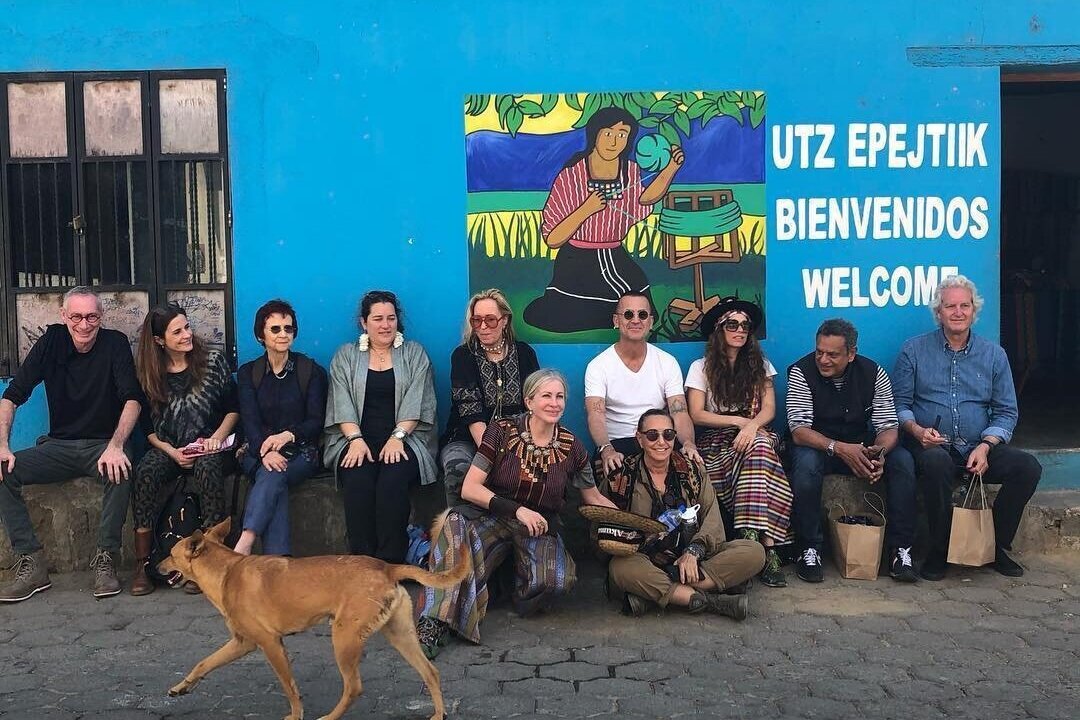The meaning of a recycled huipil
One of the best parts of visiting Guatemala is enjoying colorful market days in remote Mayan communities and villages. Travelers venture from all over the world to the vivid markets of Antigua Guatemala or to enjoy the hustle and bustle of market day in Chichicastenango, the largest market in Central America.
But behind this unique experience lies the unfortunate reputation of these places being extremely affordable for travelers, which isn’t always the case. Travel guides, bloggers or even local travel agencies advise travelers to not pay full price to vendors, but to actually dabble in the art of bargaining; especially when it comes to textiles.
Is Bargaining Acceptable?
Many of these markets hold textile treasures from all over the country, you’ll find gems and pieces so unique that if you don’t buy them immediately, the chances of finding the same are very slim to none. Poverty and inequality in Guatemala for artisans puts them in a tight spot when it comes to selling their pieces, so not sticking to a fixed price is an easy alternative to guarantee a sale.
The textile market in San Antonio Aguas Calientes, 10 minutes outside Antigua
Some people even say that bargaining is cultural in Guatemala, but let me tell you it isn’t. I don’t go to the supermarket and ask for a discount, so why should this be the case in crafts markets?
If you feel you’re getting ripped off, it’s perfectly fine to ask for a discount but make sure this price reduction is fair and not insulting to the hands that made the piece.
Buying a Recycled Huipil
A "recycled" huipil is the term used by middlemen in markets referencing secondhand Mayan blouses known as huipiles. In some cases, there are specific days and places where you can purchase a recycled huipil. The perk? Well you buy the huipiles for much less than what they are really worth. So far, it seems like a great deal no one could resist, but what is the real reason these Mayan blouses are being sold for so cheap?
First, we need to understand that something recycled is something that was discarded or thrown to the trash, and from that point salvaged for better or more use. In this case, a recycled huipil has another background.
Why do Weavers Resell their Pieces?
There’s a huge chance that the recycled huipil you’re buying was sold out of despair, by a mother who really needed the money and was forced to selling it for just a few dollars. This disregards the effort, complexity and symbolism put into the piece.
Irma from San Juan la Laguna with many amazing handmade creations
Most Maya women weavers are part of a vulnerable sector of Guatemalan society with few opportunities for education, health, work, not to mention professional development. Women weavers carry with them alegacy of 3,500 years of culture. But with the money they’re making, the acquisition capabilities are so low that they are no longer able to even continue weaving, so this means that with the little money they got for the huipil, they are most likely to get a regular blouse, leading straight to one of the main reasons of extinction of culture.
Is Buying a Recycled Huipil Bad?
Honestly, I don’t think it is, as long as you do it the ethical way. The colors, patterns and mysticism in a huipil, combined with modern day accessories or clothes look beautiful, but there is a smart, conscious, and better way to fuse it. When done correctly, everyone should wear it with pride.
By acknowledging the textile you’re buying represents a legacy and by paying a fair price, you can contribute to the development of whoever created the huipil. You guarantee that what you pay will allow the maker to inherit the weaving culture, avoid migration and receive an income that allows them to afford a decent diet, education, and achieve community development; but mostly to be able to keep weaving.
The Future of Guatemalan Textiles
Hopefully the reality of doing it right is not far from being true, many social enterprises are providing a fair income for sustainable weaving and do not engage in cutting or tearing apart a magnificent and meaningful huipil. Don’t get me wrong, being able to repurpose a huipil in the ethical way is something that should be admired, as great things come from co-creation and cooperation.
Other advances are the efforts made by the Women's Association for the Development of Sacatepéquez (AFEDES), which brought Initiative 5247 to the constitutional court and is seeking the protection and acknowledgment of the collective intellectual property of their cultural heritage, the bill is yet to be accepted and if passed it will guarantee a necessary change in working with Maya communities in today's fashion industry.
Book a Sourcing Trip to Guatemala
I hope this blog post sheds some light on the meaning a recycled huipil has for the makers and how your purchase can create impact. If you’re seeking to purchase ethically sourced textiles, contact us to organize a sourcing trip directly with our artisan partners. Our textile travels take you directly to the artisans and teach you more about the background and culture behind Guatemalan textiles.
Textile travels and sourcing trip in colaboration with PACUNAM; featuring Livia Firth from Ecoage; fashion designers Donna Karan, Naheem Kahn, Steven Kolb, Carolina K, Figue, and Carmen Busquets




